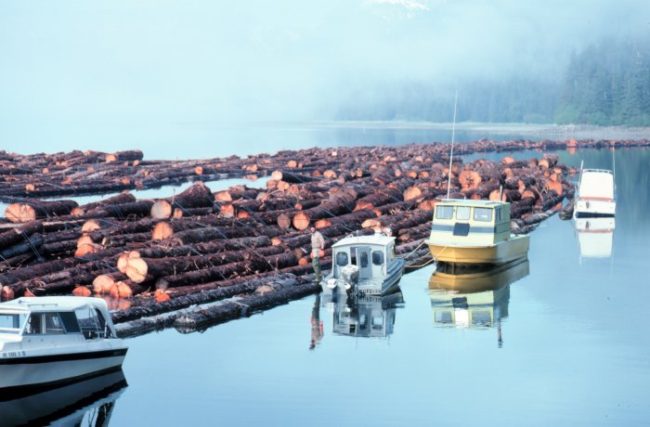
Congress created the Secure Rural Schools program in 2000 to help regions stung by the slowdown in logging. It gives money to some 700 communities across the country, from Puerto Rico to Southeast Alaska.
It’s especially important there, where the commercial timber industry was all but idled in the 1990′s.
“They didn’t do anything wrong. Those communities are just located in a national forest,” said Bruce Hunter.
Hunter, the associate executive director of the School Superintendents Association, said communities located on federal land took it on the chin when the government ended large-scale logging during the Clinton administration.
“Timber harvested resulted in money to the counties, royalty money to the counties,” he said Wednesday afternoon.
Without that money local governments can’t pay for schools. To be clear: it’s not just education that gets money. Local governments divvy it up between schools and infrastructure projects – roads, bridges – anything that would normally be paid for with tax dollars.
Regional forester for Alaska Beth Pendelton said Kake used $85,000 to reconstruct a .8 mile trail on the Hamilton Creek estuary; a trail she says gets used for both subsistence and sport fishing and hunting.
“The contract for that work went to a small firm in Ketchikan, so it provided for some local jobs,” she said. “And it also provided for the use of locally milled Alaska yellow cedar for the surfacing project.”
Local communities have come to rely on the money because they can’t tax federal land.
It took more than a few by surprise when Forest Service Chief Tom Tidwell fired off a letter to governors saying he needs the money back. In January, the Forest Service began giving out the payments.
“A lot of these communities just have no room. There’s no flexibility. What will happen then?” asked Senate Natural Resources Chairman Ron Wyden.
At a Senate hearing earlier this year, Tidwell responded states will be penalized.
“There will be interest that will occur,” he said.
Senator Lisa Murkowski called the move “adding insult to injury.”
Lawmakers across the west – states with large tracts of federal land – are screaming politics.
The Forest Service’s Tidwell said the automatic spending cuts Congress approved are forcing him to ask for the money back.
On top of that, the amount of money has been declining. Alaska took in more than $22 million dollars in 2009. That dropped about $7 million by 2012.
Bruce Hunter questions the motive behind the Forest Service’s move, especially since the money was allocated in 2012, but sequester came this year.
That created a brand new Washington phrase: retroactive sequestration.
“They knew all this was coming. This is a crazy way of doing business,” Hunter said. “If you’re going to do sequestration, take it out before hand. Or don’t give out the full amount immediately.”
Many worry rural governments will see less and less over the next nine years, because the Budget Control Act, the legislation creating sequester, lasts for a decade.
And those same people worry whether the Secure Rural Schools program will get reauthorized this year. There’s no movement on that just yet.
